Editorial Infographic
Polycystic Ovary Syndrome
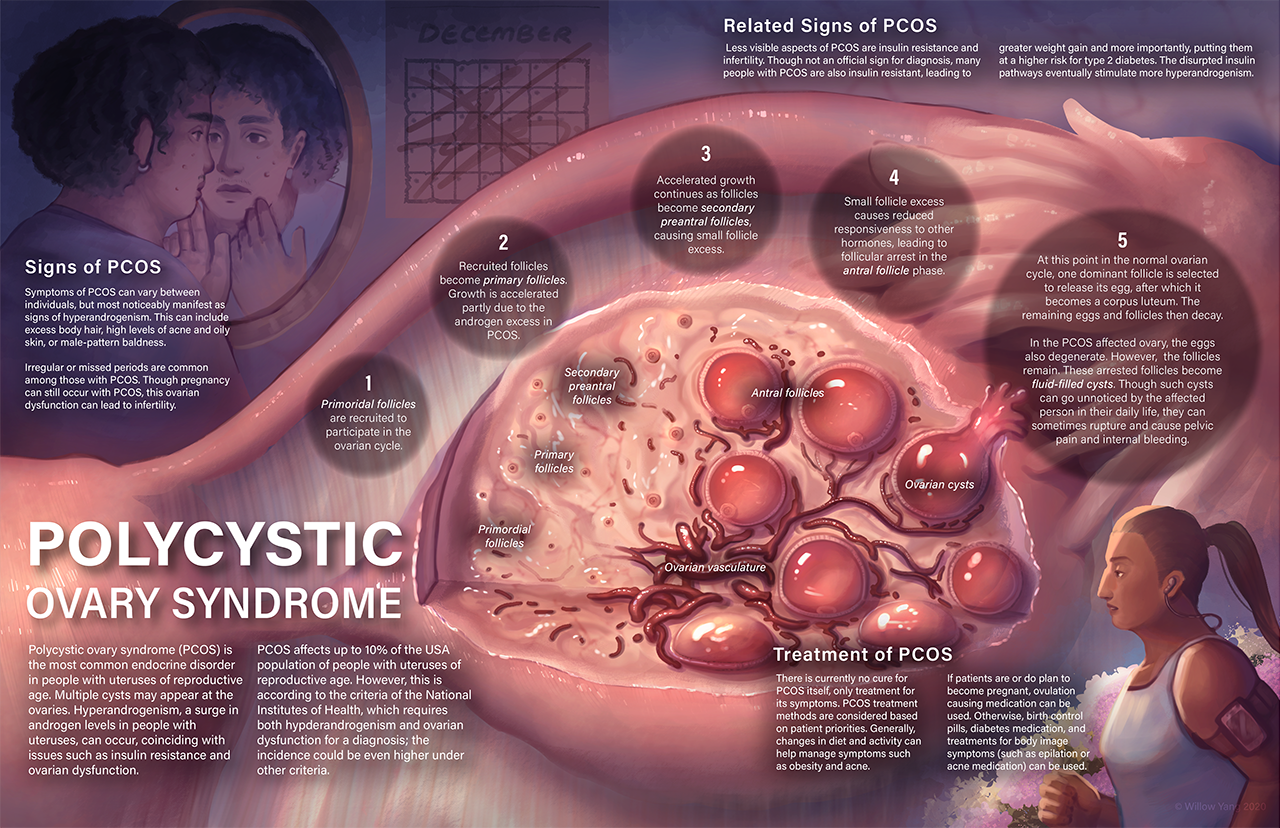
Project Type
Academic
MSC2018, MScBMC
University of Toronto
Supervisor
Dr. Shelley Wall, PhDMScBMC, University of Toronto
Duration
November 2020
Tools
Adobe Illustrator
Clip Studio Paint
Introduction
The goal of this project was to produce an original, conceptual medical illustration
demonstrating pathological change in a tissue over time. I chose to depict polycystic ovary
syndrome (PCOS), as it is a common endocrine disorder that is much less commonly known among
the general public.
With that in mind, I created this as an introductory piece for a lay audience. Rather than
focusing only on the pathological changes, I wanted to highlight the struggles and solutions
that people living with PCOS may face, and to raise awareness for those who may not even
know they have it.
Process
Concept and Tissue Studies
From the start, I wanted to create a dynamic composition fit for an editorial spread to capture the lay audience's attention. The drastic difference in sizes of the structures to portray were a challenge to combine with this goal.
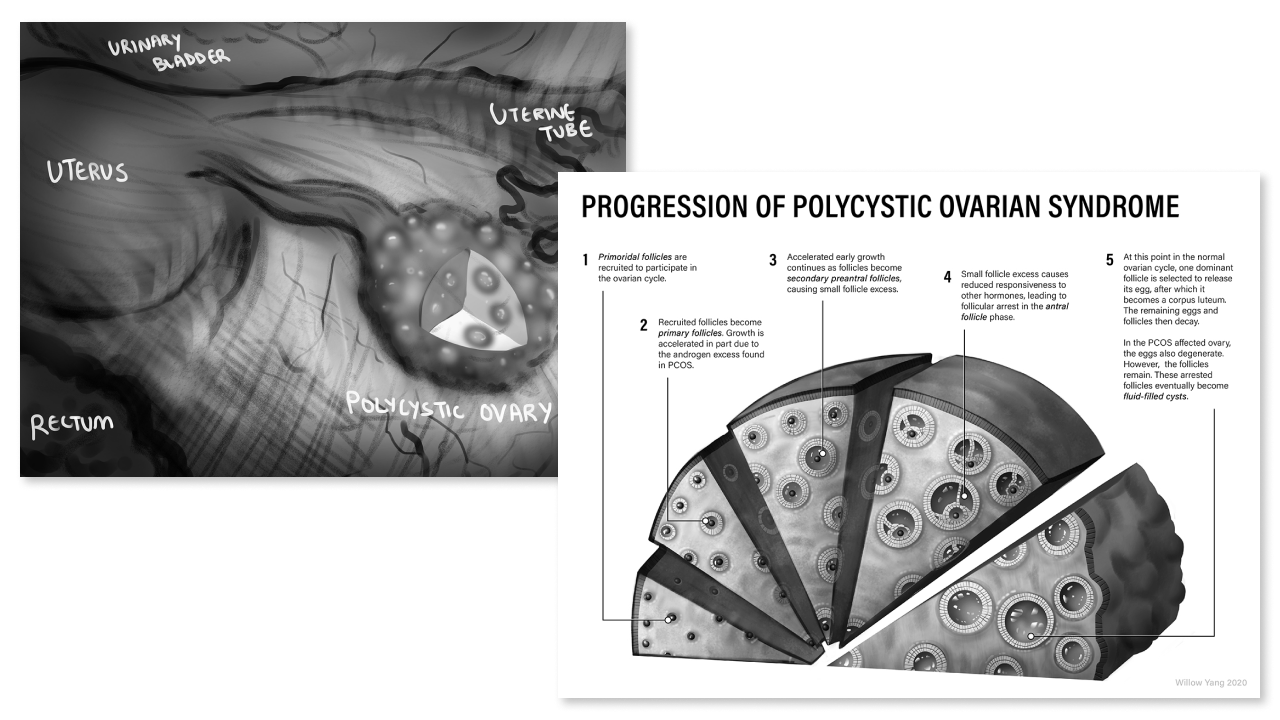
Draft
The tissue study was directly used in the first draft to save time in the process of deciding the composition. The final layout was more or less decided at this first draft.
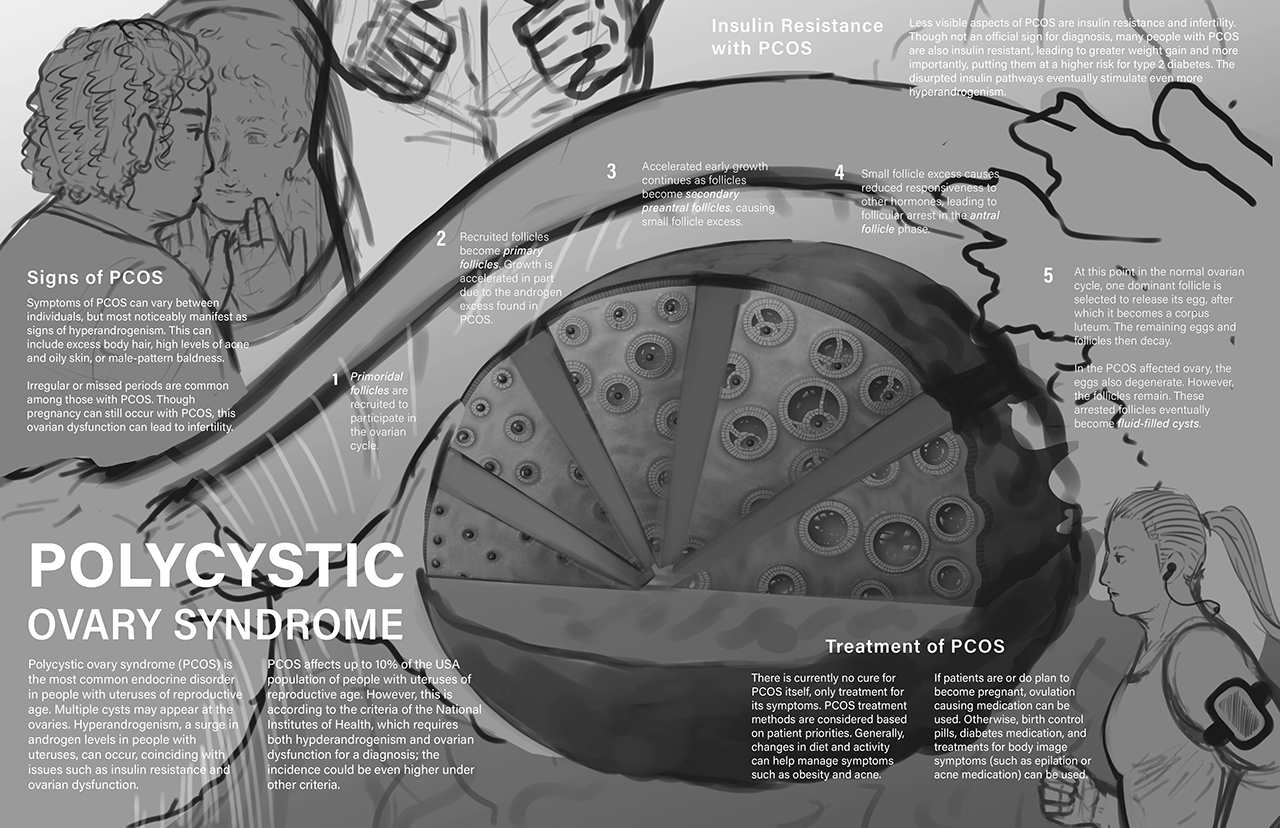
Using the anatomical structures to guide the viewer through the piece allows for a closer zoom on anatomical details, while preventing the viewer from getting lost within the piece.
Overall changes were made to the second draft for consistency and readability in text and overall values. Based on peer and supervisory feedback, the image of a hip was changed into a less conspicuous calendar.
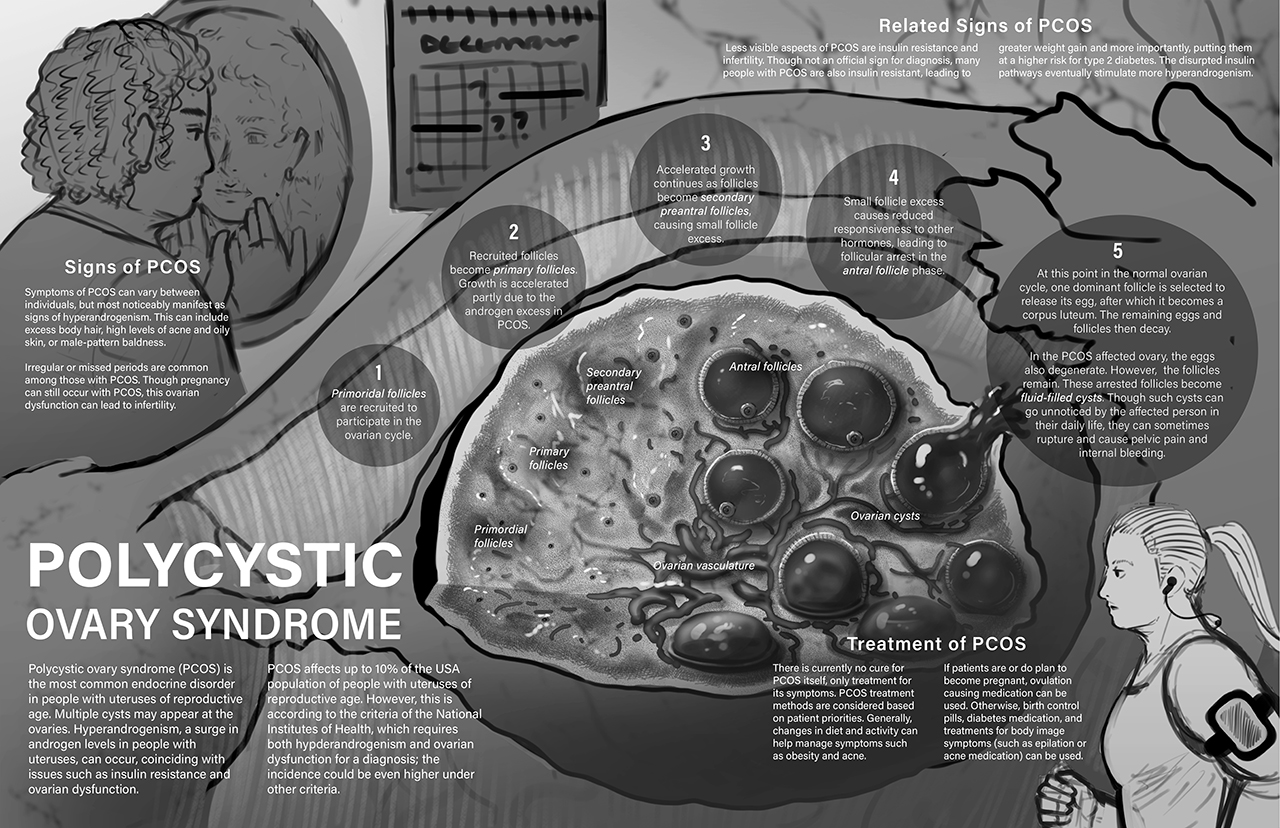
Color Thumbnails
Three basic color palettes were tested, and two were combined for the final palette.
From Palette 1, a cool purple to warm pink and yellow gradient guides the transition
from reading about symptoms to solutions. The softer pink tone of Palette 2 brings more
harmony to the piece, and aids in reading of overlaid text.
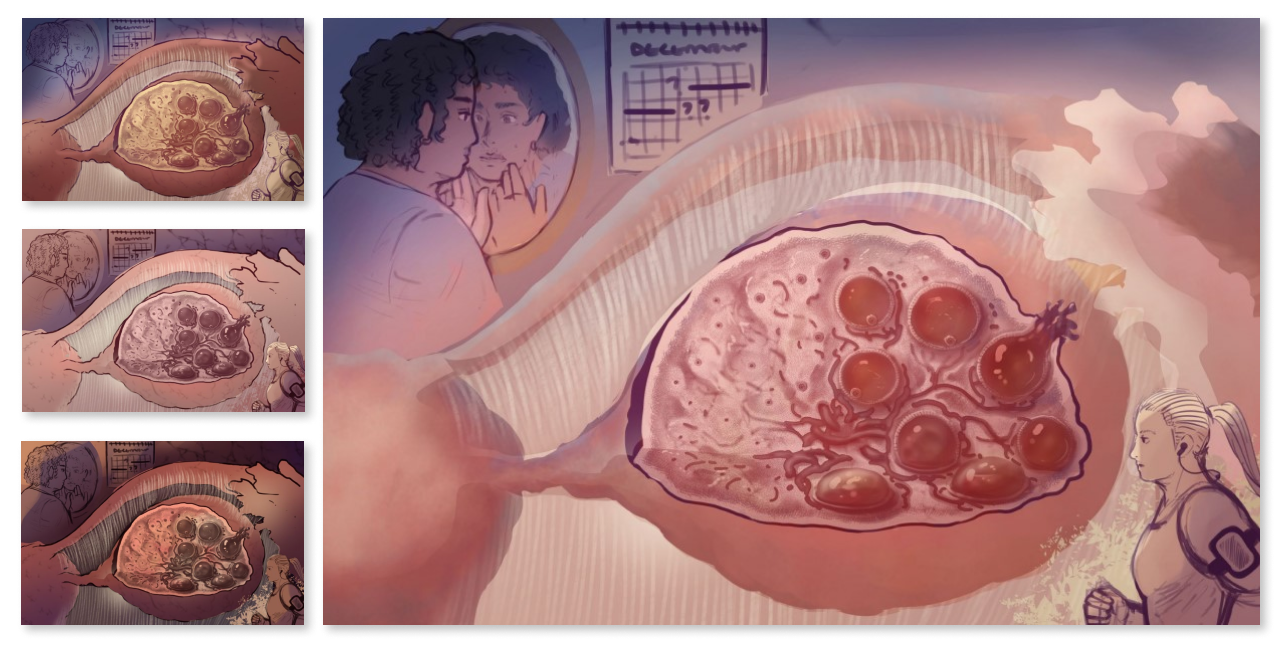
Render
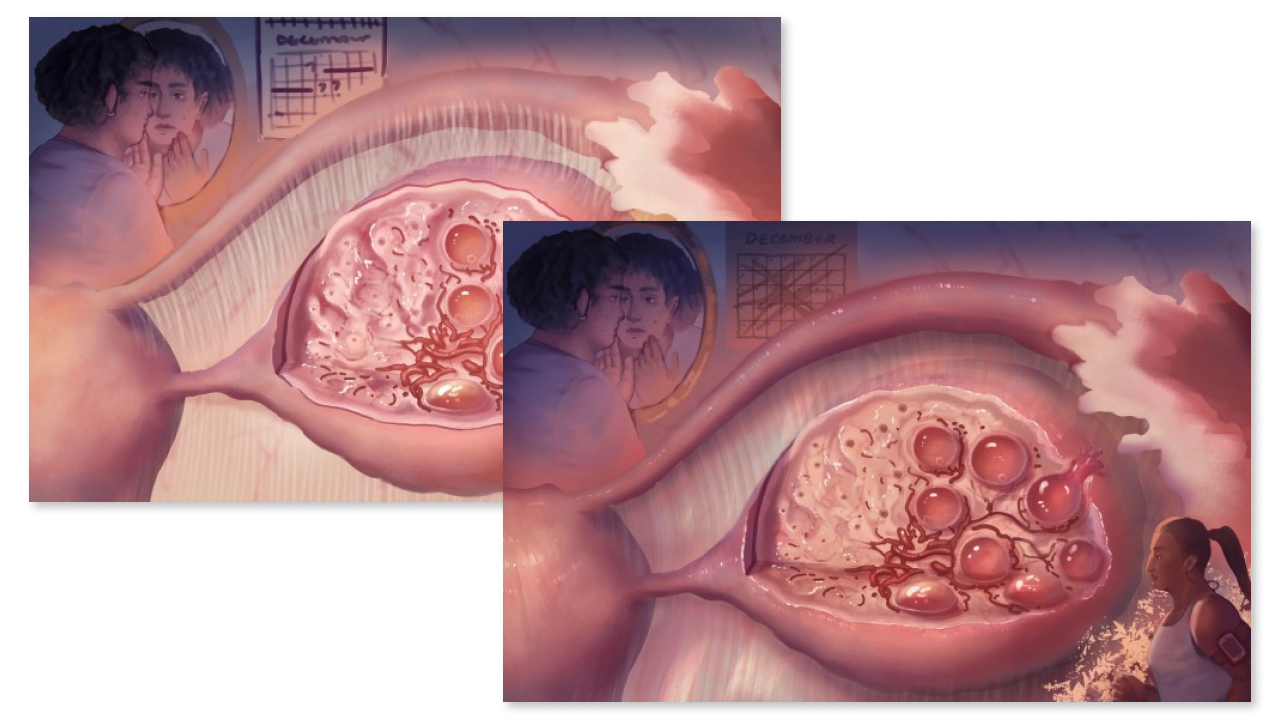
Final

References
- Diamanti-Kandarakis, E. (2008). Polycystic ovarian syndrome: Pathophysiology, molecular aspects and clinical implications. Expert Reviews in Molecular Medicine, 10. doi:10.1017/s1462399408000598
- Krstić R.V. (1991) Urogenital Apparatus. In: Human Microscopic Anatomy. Springer, Berlin, Heidelberg. doi:10.1007/978-3-662-02676-2_9
- Rose, A. (2008). Female Genital Tract and Breast. In Atlas of Gross Pathology: With Histologic Correlation (pp. 358-427). Cambridge: Cambridge University Press. doi:10.1017/CBO9780511547430.007
- Zore, T., Joshi, N., Lizneva, D., & Azziz, R. (2017). Polycystic Ovarian Syndrome: Long-Term Health Consequences. Seminars in Reproductive Medicine, 35(03), 271-281. doi:10.1055/s-0037-1603096
